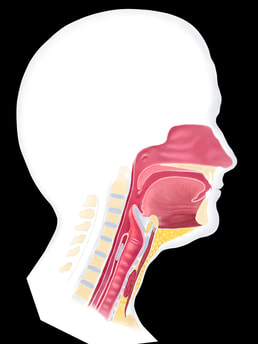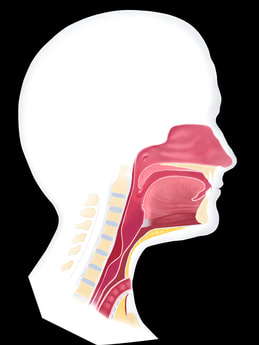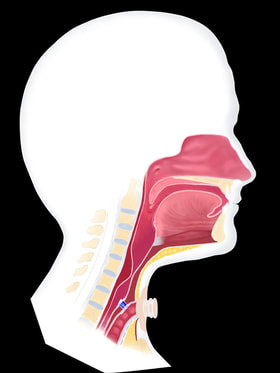A laryngectomy is a complex surgery that involves removing the larynx, also known as the “voice box.” During this surgery, your surgeon redirects the trachea or “windpipe.” A permanent opening, or “stoma” is then created at the front base of the neck. This will be the opening through which you breathe in and out. It is permanent and will not be reversed or closed. The importance of this opening and why it is permanent is often a great concern for patients and will be thoroughly explained in this material. You will also likely have many other questions and concerns. This information is meant to help guide you through a better understanding of the anatomical and physiologic changes it will bring. Please take the time to read this information completely as it will help to answer many common questions and concerns patients and their families have when going into this surgery and recovery process. Should you have any further questions, Dr. Ducic or Katrina will gladly answer them for you. Their support staff, Allison, Jessica, Kwanita and Ana are also very helpful in this regard and can often times answer these questions quickly and easily for you.
Being a “Neck Breather”
In addition to removing the vocal cords, there are other structures that are also parts of your larynx (voice box) that will be removed. Many of these removed structures are important in swallowing safely and ensuring you do not choke. This explains, when there is a laryngeal cancer, why so many patients find it difficult to eat without choking. Often times, there are diseased parts of the larynx that prevent them from swallowing safely.
When your larynx is removed, including these structures important for safe swallowing, the trachea, or “windpipe” is left open and the food you eat and drink will enter your windpipe and your lungs. For this reason, your windpipe is diverted, or “rerouted,” suturing the opening to your neck, disconnecting it from the rest of your throat, and therefore ensuring you will no longer be at risk for choking when you eat.
After your surgery, it is very important that everyone involved in your care understand that you breathe differently from other people. Family members, caregivers and other health professionals should be aware that you no longer can take air in through your nose and mouth. This is very important should you ever need CPR because breaths need to be given through the stoma in your neck or it will not get to your lungs. You should purchase a medical alert bracelet, necklace or lapel pin that states “Neck Breather.” It is important that you wear this at all times.
Since you will be breathing through the stoma in your neck, it is also very important that you protect your stoma. Before a laryngectomy, the nose helps to filter the air that is inhaled. After the surgery, all the air you breathe goes in and out of the stoma, bypassing the natural filtration of the nose. It is very important to stay away from smoke, dust and other pollutants as these will be inhaled directly into your lungs.
In addition to filtering the air, breathing in through the nose and mouth also helps to heat and humidify air that is inhaled. After a laryngectomy, inhaled air through the stoma enters the lungs without first being humidified or heated since it is no longer being inhaled through the nose/mouth. A heat and moisture exchange cassette, or HME, will be utilized after your surgery to assist with these changes.
|
|
Coughing as a neck breather means anything you should expel from your lungs will be expelled or coughed out through your stoma. Although you are accustomed to covering your mouth when you cough, you will learn instead to cover your stoma. Initially following surgery and for several weeks thereafter, you will cough a great deal of mucous and secretions from your lungs. The lungs are increasing the output of secretions and mucous in response to the changes in your anatomy and physiology. Regular application of the HME assists with restoring normal lung function by delivering the heated/warmed and humidified air the lungs are accustomed to. Over time with regular HME application, the secretion production will slow down.
Many patients are concerned to see, despite regular HME application and sufficient healing from surgery, they continue to cough mucous from their stoma. It should be stressed that the lungs should normally produce mucous in healthy people as a protective layer to help keep lung tissue moist as well as to serve to trap inhaled particles that may be harmful to lung tissue. In a non-laryngectomized patient, these secretions are coughed frequently during the course of a normal day and typically swallowed. Following a laryngectomy, however, these secretions must be expelled from the stoma and wiped away. It is important to remember this is quite normal, although Dr. Ducic or Katrina may be able to offer suggestions for improved secretion management if it seems atypical. |




